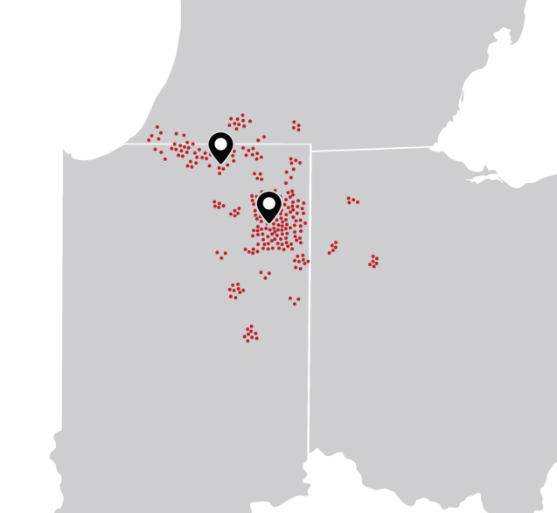As winter approaches, construction continues. Projects even with the best intentions of ‘getting closed up’ before winter sometimes still need concrete poured for floors that will be polished. When pouring concrete in freezing type conditions it’s important to keep them warm enough to allow the curing process to continue.
Why does concrete need a blanket?
Concrete is made with water and as you can guess in winter/freezing conditions the water will want to freeze. During the placement phase, concrete can be warmed up with hot water or have accelerators mixed in with the concrete that heats up the mixture, but once placed and the initial reaction dissipates the concrete is exposed to the conditions. Blanketing concrete is a common practice in which insulated blankets are placed over a fresh slab to keep the warmth of this initial reaction to stay longer, and keep the concrete processing through its typical 28-day curing cycle. If concrete freezes, the curing process stops, and will not start back up. This means that if concrete freezes early in its placement it won’t reach its full potential for hardness or durability.
Blankets and Polished Concrete Floors.
Blankets perform a structural purpose of keeping concrete hard, dense, and strong; but what about aesthetics? In polished and stained concrete flooring, the durability of the concrete is an advantage of concrete flooring, but we also need the new floor to be aesthetically pleasing. The drawback on blanketing concrete is that the insulated blankets keep all moisture from the curing process under the blanket, (really good for hard concrete) but this moisture then pools and follows the crinkles in the insulated blanket and can cause some unsightly marking, that becomes a permanent part of the concrete.
What to do?
Some initial steps by the placement contractor may help prevent blanket mark staining. These include:
- Waiting as long as possible to blanket the concrete
- If possible getting through the first night without the blankets
- I have heard of a curing paper that can be used that will not leave markings. The process is to install this film- then the blankets. I am not aware of any successful projects or the added cost for this. Please email me if you have information on this.
If blanket marks do appear, there may be some remedies such as:
- Grinding through the blankets marks. This will expose more aggregate in the concrete.
- Using a dye or stain to accent the markings, adding to a ‘movement’ look (if desired)
Notes
- Every concrete slab and condition will react differently to these markings.
- An on-site sample can show how marks will affect final finish or remove marks.
- The General Contractor, Owner, Architect, Concrete Contractor, and Concrete Polisher should all be involved in discussions around the blanket process, and how it might affect polishing process and pricing.
Of course, if we can help with a polishing project feel free to call us at 260-748-2252 or email at create @danceroncrete.com.
Nick


